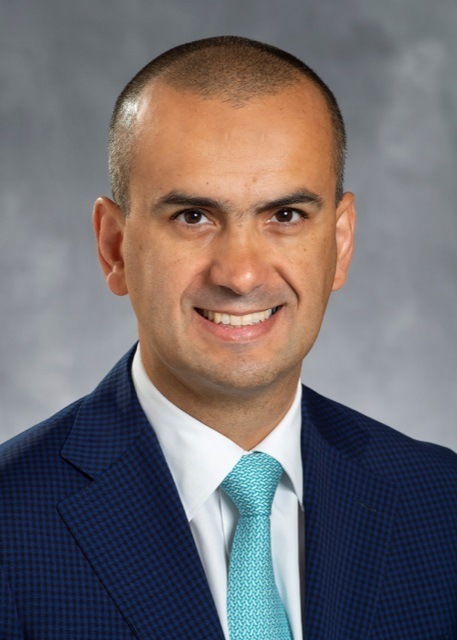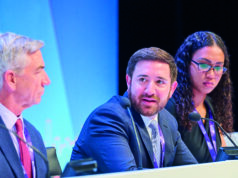
Santiago Garcia (Minneapolis Heart Institute Foundation, Abbott Northwestern Hospital, Minneapolis, USA) and colleagues report in the Journal of the American College of Cardiology that there was a 38% drop in cath lab ST-segment elevation myocardial infarction (STEMI) activations in the USA after the COVID-19 pandemic started to substantially affect US social life and medical operations (1 March 2020). The authors suggest that this could be because patients are avoiding seeking medical attention for fear of contracting the virus in hospital.
Garcia et al write that the US Centers for Disease Control and Prevention (CDCDP), to preserve resources such as personal protective equipment (PPE) and hospital beds, recommend deferring elective procedures—for example, percutaneous coronary intervention (PCI) for patients with stable coronary artery disease. However, they add that both the Society for Cardiac Angiography and Interventions (SCAI) and the American College of Cardiology (ACC) advise that primary PCI should still be performed, during the pandemic, in patients with STEMI.
According to the authors, anecdotal evidence suggests that the number of primary PCI procedures in the USA and across the globe have declined since the outbreak began. “To determine if a decrease in primary PCI is occurring in the USA in the COVID-19 era, we analysed and quantified STEMI activation for nine high-volume cardiac catheterisation laboratories from 1 January 2019 to 31 March 2020,” they write.
Using a mixed model, Garcia et al compared STEMI activations that occurred between 1 January 2019 and 29 February 2020 with those that occurred between 1 March 2020 and 31 March 2020. 1 March was chosen as the start of the “after COVID” period because that was when, the authors note, US social life and medical operations started to be significantly affected. In particular, New York City (the epicentre of the virus in the USA) reported its first case on 1 March and the US government recommended social distancing on 15 March.
The mixed model showed an estimated 38% reduction in cardiac catheterisation laboratory STEMI activations in March 2020, compared with the previous 14 months. The authors comment: “All sites combined reported >180 STEMI activations in the before COVID-19 period. In contrast, all sites combined reported only 138 activations.” They say that the 38% reduction is similar to a 40% reduction that has been seen in Spain.
Garcia et al observe that, during the pandemic, activations might have been expected to go up “given the potential heightened environmental and psychological stressors”. Cases of STEMI induced by viral illness and STEMI mimickers such as COVID-19 myopericarditis may also have theoretically caused activations to increase. “Potential aetiologies for the decrease in STEMI primary PCI activations include avoidance of medical care due to social distancing or concerns of contracting COVID-19 in hospital, STEMI misdiagnosis, and increased use of pharmacological reperfusion due to COVID-19,” the authors speculate.
Garcia and colleagues conclude that their preliminary paper by saying that they continue to “follow this early signal and investigate its causes”. “It is particularly crucial to understand if patient-based anxiety is decreasing presentation of STEMI patients to the US hospital system,” the authors state.
Garcia told Cardiovascular News: “We need to understand what are the forces driving this unexpected fall in the number of cardiac catheterisation laboratory activations for the most serious heart attacks. Importantly, this decline in cath lab activation coincides with reports of an increased number of cardiac arrests at home. We cannot be certain the two are linked, but it is possible that many patients with heart attacks are deciding to stay home due to concerns about contracting COVID-19 in the hospital or because they think they have COVID-19 and should self-isolate at home. Patients need to be reassured that hospitals are safe and fully operational when it comes to treating cardiovascular emergencies.”
Nervous patients

Garcia et al’ study has been the subject of much discussion on #CardioTwitter, with physicians from both Europe and the USA noting that they have witnessed a drop in primary PCI. Deepak Bhatt (Brigham and Women’s Hospital Heart & Vascular Center, Harvard Medical School, Boston, USA) told Cardiovascular News that he too has seen a drop in primary PCI at his centre in Boston since the pandemic began but said that the drop in non-STEMI cases “has been even more notable” than for STEMI.
Similar to Garcia et al, Bhatt believes that one of the reasons for these decreases may be that “patients are scared to come to hospitals because of COVID-19”. “There are more delayed presentations of STEMI and probably some out-of-hospital deaths that are not counted as STEMIs, and possibly some more folks who will eventually come in with bad heart failure,” he says.
Following the reports of reductions in primary PCI, both the European Society of Cardiology and the ACC have taken steps to urge the general public to seek medical advice if they experience the symptoms of myocardial infarctions. Both societies stress that hospitals are taking the necessary precautions to reduce the risk of patients contracting COVID-19 while in hospital.
Different treatments and fewer triggers
Another potential reason for why primary PCI cases have gone down is that centres, because of a lack of resources, are preferring to use thrombolysis. Bhatt says that this is an understandable approach when “operating under disaster conditions” as physicians have to “do what they have to do”. But, he states that primary PCI should be the “treatment of choice” for STEMI in places that still have the capacity to provide it.
For Bhatt, a “more speculative” reason for the drop in cases is that people living under lockdown conditions are now substantially less exposed to myocardial infarction triggers. “Air pollution is a big underappreciated trigger for myocardial infarction, in my opinion, including the commute to work (which can be stressful in other ways). Also, work-related stress I believe is a huge trigger. Sure, there can be home-related stress and, especially financial stress during this epidemic, but on average, I think these pale in comparison to actual on-the-job stress—nothing is quite as bad as a bad boss in terms of generating stress!” Bhatt explains.
Furthermore, like many, he hopes that something positive will come out of this current situation. He notes: “I hope this pandemic gives us all pause to see how we can make life better for everyone. I hope it spawns lots of permanent, common sense changes.”










